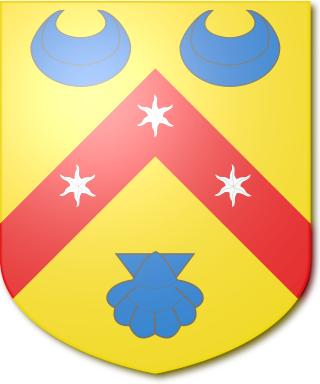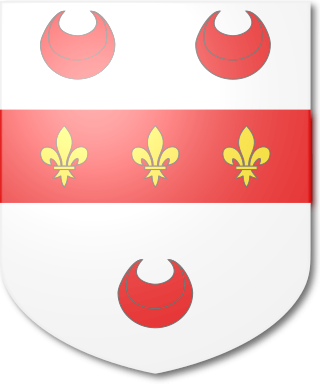
Viscount Hardinge, of Lahore and of Kings Newton in the County of Derby, is a title in the Peerage of the United Kingdom. It was created in 1846 for the soldier and Tory politician Sir Henry Hardinge. His son, the second Viscount, represented Downpatrick in Parliament. His great-great-grandson, the sixth Viscount, succeeded a distant relative as eighth Baronet, of Belle Isle in the County of Fermanagh, in 1986. This title had been created in the Baronetage of the United Kingdom 1801 for Richard Hardinge. He was the third son of Nicolas Hardinge, younger brother of Reverend Henry Hardinge and uncle of the latter's third son Henry Hardinge, 1st Viscount Hardinge. The baronetcy was created with special remainder to the heirs male of Richard Hardinge's father.

There have been two baronetcies created for members of the Jessel family, both in the Baronetage of the United Kingdom. One creation is extant as of 2012.
The Duff, later Duff Gordon Baronetcy, of Halkin in the County of Aberdeen, is a title in the Baronetage of the United Kingdom. It was created on 12 November 1813 for James Duff, British Consul in Cádiz, with remainder to his nephew, William Gordon.

The Austin Baronetcy, of Red Hill in the parish of Castleford in the West Riding of the County of York, is a title in the Baronetage of the United Kingdom. It was created on 16 July 1894 for John Austin, Liberal member of parliament for Osgoldcross.

The Henniker Baronetcy, of Newton Hall in the County of Essex, was created in the Baronetage of the United Kingdom on 2 November 1813 for Brydges Henniker, who had earlier represented Kildare Borough in the last Irish Parliament. He was the youngest son of John Henniker, 1st Baron Henniker. The sixth baronet was an admiral in the Royal Navy and sat as Conservative member of parliament for Galloway. The eighth Baronet was a brigadier in the Royal Engineers.

There have been two baronetcies created for the Guise family, one in the Baronetage of England and one in the Baronetage of Great Britain. The latter creation is extant as of 2014.
The Brownrigg Baronetcy is a title in the Baronetage of the United Kingdom. It was created on 9 March 1816 for General Robert Brownrigg. He was Governor of Ceylon from 1813 to 1820. He was succeeded by his grandson, the second Baronet. On his death the title passed to his younger brother, the third Baronet. His eldest surviving son, the fourth Baronet, was a Rear-Admiral in the Royal Navy. As of 2024 the title is dormant.

The Walsham Baronetcy, of Knill Court in the County of Hereford, was a title in the Baronetage of the United Kingdom. It was created on 30 September 1831 for John James Walsham. He received the baronetcy as the eldest co-heir and representative of Sir Thomas Morgan, 1st Baronet. The second Baronet was Envoy Extraordinary and Minister Plenipotentiary to China from 1885 to 1892 and to Romania from 1892 to 1893. The fourth Baronet was a rear admiral in the Royal Navy.

The Oakeley Baronetcy, of Shrewsbury, is a title in the Baronetage of Great Britain. It was created on 5 June 1790 for the Indian administrator Charles Oakeley. He served as Governor of Madras from 1790 to 1794. Frederick Oakeley was the second son of the first Baronet.

The Medlycott Baronetcy, of Ven House in the County of Somerset, was a title in the Baronetage of the United Kingdom. It was created on 3 October 1808 for William Medlycott, Member of Parliament for Milborne Port from 1790 to 1791. The family descended from James Medlycott, of Ven House, who represented Milborne Port in the House of Commons between 1710 and 1722. His son Thomas Medlycott died without surviving male issue in 1763 and left his estates to his maternal nephew Thomas Hutchings, who adopted the surname of Medlycott. His son was the first Baronet. The baronetcy became extinct with the death of the 9th Baronet in 2021.
The Hartwell Baronetcy, of Dale Hall in the County of Essex, is a title in the Baronetage of the United Kingdom. It was created on 26 October 1805 for Admiral Francis Hartwell.

The Leeds Baronetcy, of Croxton Park in the County of Cambridge, is a title in the Baronetage of the United Kingdom. It was created on 31 December 1812 for George Leeds. He was an equerry to Prince Augustus Frederick, Duke of Sussex. The Croxton Park estate in Cambridgeshire had been in the Leeds family since circa 1568. As of 2011 the presumed ninth and present Baronet, a resident of Canada, has not successfully proven his succession and is not on the Official Roll of the Baronetage.

The Farrington Baronetcy, of Blackheath in the County of Kent, is a title in the Baronetage of the United Kingdom. It was created on 2 December 1818 for General Sir Anthony Farrington, 1st Baronet.

The Pigot Baronetcy, of Patshull Hall in the County of Stafford, is a title in the Baronetage of Great Britain. It was created on 5 December 1764 for the politician and colonial administrator George Pigot, with remainder to his brothers General Robert Pigot and Admiral Hugh Pigot, and remains extant. On 19 January 1766 Pigot was further honoured when he was raised to the Peerage of Ireland as Baron Pigot, with normal remainder to the heirs male of his body. Lord Pigot was unmarried and on his death in 1777 the barony became extinct. He was succeeded in the baronetcy according to the special remainder by his brother, Robert, the second Baronet. He was a distinguished soldier.
The Domville Baronetcy, of St Alban's in the County of Hertford, was a title in the Baronetage of the United Kingdom. It was created on 28 July 1814 for William Domville, Lord Mayor of London from 1813 to 1814. He was a descendant of William Domville, elder brother of Gilbert Domvile, ancestor of the Domvile baronets of Tempoleogue. The title became extinct on the death of the seventh Baronet in 1981.
The Robinson Baronetcy, of Batts House in the County of Somerset, was created in the Baronetage of the United Kingdom on 11 November 1823 for George Robinson, who had earlier represented Honiton in Parliament. The title became extinct on the death of the sixth Baronet in 1944.
The Montgomery baronetcy, of Stanhope in the County of Peebles, was created in the Baronetage of the United Kingdom on 16 July 1801 for the Scottish lawyer and politician James Montgomery. The second Baronet represented Peeblesshire in Parliament. The third Baronet represented both Peebles and Peebles and Selkirk in Parliament. He assumed the additional surname of Graham. The seventh Baronet was Lord-Lieutenant of Kinross-shire. He assumed the surname of Purvis-Russell-Montgomery in 1906 and Purvis-Russell-Hamilton-Montgomery in 1933. The eighth and ninth Baronet have used the surname Montgomery only. The ninth Baronet was Lord-Lieutenant of Perth and Kinross.
The Sullivan baronetcy, of Thames Ditton in the County of Surrey, was created in the Baronetage of the United Kingdom on 22 May 1804 for the writer and MP Richard Sullivan. The third and sixth Baronets were Admirals in the Royal Navy. The ninth holder of the baronetcy did not use his title; as of 2023 the Official Roll marked the baronetcy as vacant.

The Mackenzie baronetcy, of Coul (Coull) in the County of Ross, was created in the Baronetage of Nova Scotia on 16 October 1673 for Kenneth Mackenzie. His father Alexander Mackenzie of Coul was the illegitimate son of Colin Cam Mackenzie, 11th of Kintail, and half-brother of Kenneth Mackenzie, 1st Lord Mackenzie of Kintail, ancestor of the Earls of Seaforth, and of Sir Roderick Mackenzie, ancestor of the Earls of Cromarty. The 3rd Baronet was involved in the Jacobite rising of 1715. He was attainted with the baronetcy forfeited.
The Elphinstone baronetcy, of Logie in the County of Aberdeen, was created in the Baronetage of Nova Scotia on 2 December 1701 for James Elphinstone, with remainder to heirs male whatsoever. The title became dormant on the death of the 4th Baronet in 1743.












